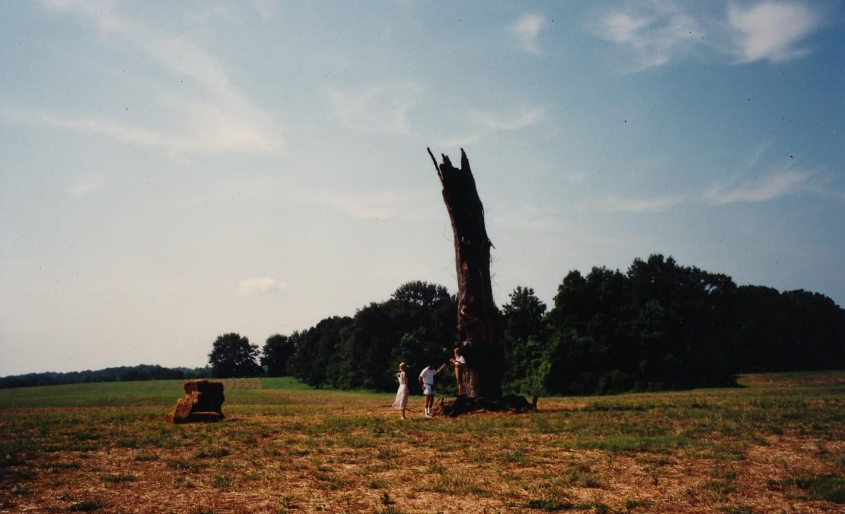
Fried Green Tomatoes, released in 1991 and based on Fannie Flagg’s beloved novel Fried Green Tomatoes at the Whistle Stop Cafe, became a cinematic gem known for its heartwarming narrative and complex female relationships. But behind the soft Southern accents and warm meals was a production filled with creative tension, unexpected breakthroughs, and some near-miss casting choices that could have made the film very different.
Casting Choices That Almost Happened
Believe it or not, Mary Stuart Masterson, who played the rebellious and magnetic Idgie Threadgoode, was not the first name on the list. Other actresses considered for the role included Winona Ryder and Jodie Foster, but director Jon Avnet felt Masterson had the perfect balance of toughness and vulnerability.
Mary-Louise Parker was similarly not a frontrunner for Ruth, but her audition revealed a quiet strength that captured the emotional center of the character. Their onscreen chemistry — so central to the film — was a surprise even to the crew.
Interestingly, Kathy Bates, who played Evelyn Couch, had just finished filming Misery (1990), and some crew members doubted whether audiences would accept her in such a soft and comedic role. She quickly proved them wrong — and even improvised several now-iconic lines.
Building the Whistle Stop Café from the Ground Up

The fictional town of Whistle Stop was created in Juliette, Georgia, a nearly abandoned village that was transformed for filming. Production designers restored the main street, painted buildings, added vintage signage, and most importantly, built the Whistle Stop Café from scratch in an old general store.
After filming ended, the town kept the set — and the café was turned into a real restaurant, which still exists today. Fans from all over the world travel to Juliette to eat fried green tomatoes at the very table where Idgie and Ruth once served locals in the film.
Filming in the Heat of the South
Summer in Georgia is not for the faint of heart. During filming, temperatures often exceeded 100°F (38°C), causing delays, makeup meltdowns, and even some health scares. The crew had to constantly reapply powder to the actors and cool down equipment.
Despite the heat, the natural beauty of the Southern landscape gave the film its signature look: golden light, warm colors, and lush greenery — a nostalgic vision of the South that contrasted with the dark themes of racism and abuse.
Screenplay Adaptation and Censorship Controversy
The original novel features a clearly romantic and sexual relationship between Idgie and Ruth, but the film adaptation softened this into a more ambiguous “deep friendship.” Screenwriter Fannie Flagg, also the author of the book, worked with director Jon Avnet to keep the emotional core intact — even if studio pressures made them tone down the LGBTQ+ aspects.
In later interviews, cast and crew members admitted that they shot scenes with more overt intimacy, but those were cut in editing to avoid backlash or censorship. Still, many fans continue to see Fried Green Tomatoes as a landmark film for queer subtext and female bonding.
On-Set Friendships That Lasted
According to behind-the-scenes interviews, the cast formed close bonds during production. Mary Stuart Masterson and Mary-Louise Parker, in particular, spent hours rehearsing their scenes, cooking together off-set, and building trust.
Kathy Bates also described her time on set as “transformative,” stating that Evelyn’s evolution gave her courage in her own life — much like Evelyn finding her voice, Bates felt she began to step into more complex, empowered roles after this film.
Alternate Endings and Deleted Scenes
Few fans know that Fried Green Tomatoes originally had a longer and more magical ending, involving an older Idgie appearing directly in front of Evelyn — confirming the story’s truth. Test audiences found it confusing, so the scene was cut.
Deleted scenes also included a flashback to Ruth’s funeral, a longer version of the courtroom testimony, and more background on Sipsey’s life. Some of this footage still exists in archived reels but has never been officially released.
Real Fried Green Tomatoes… Almost Poisoned the Cast
Yes — the fried green tomatoes in the film were real, and the crew prepared them fresh every day. But one day, a batch was mistakenly made with unripe red tomatoes, which can be slightly toxic if undercooked. Several extras reported nausea, leading to an emergency catering reset and a new “tomato consultant” being hired.
From then on, only firm green tomatoes from local Georgia farms were used, often battered with cornmeal and pan-fried in bacon grease.
Real Magic in Small Details
What made Fried Green Tomatoes endure wasn’t just its plot, but the authenticity behind its production. The cast’s genuine connection, the thoughtful set design, the tough filming conditions, and the layers of history in every frame all came together to create a film that feels lived-in — like a memory you can return to.
Behind every bite of fried green tomatoes, every glance between Idgie and Ruth, and every line Evelyn shouts in the parking lot, there is a story of commitment, craft, and quiet courage — both onscreen and behind the camera.
